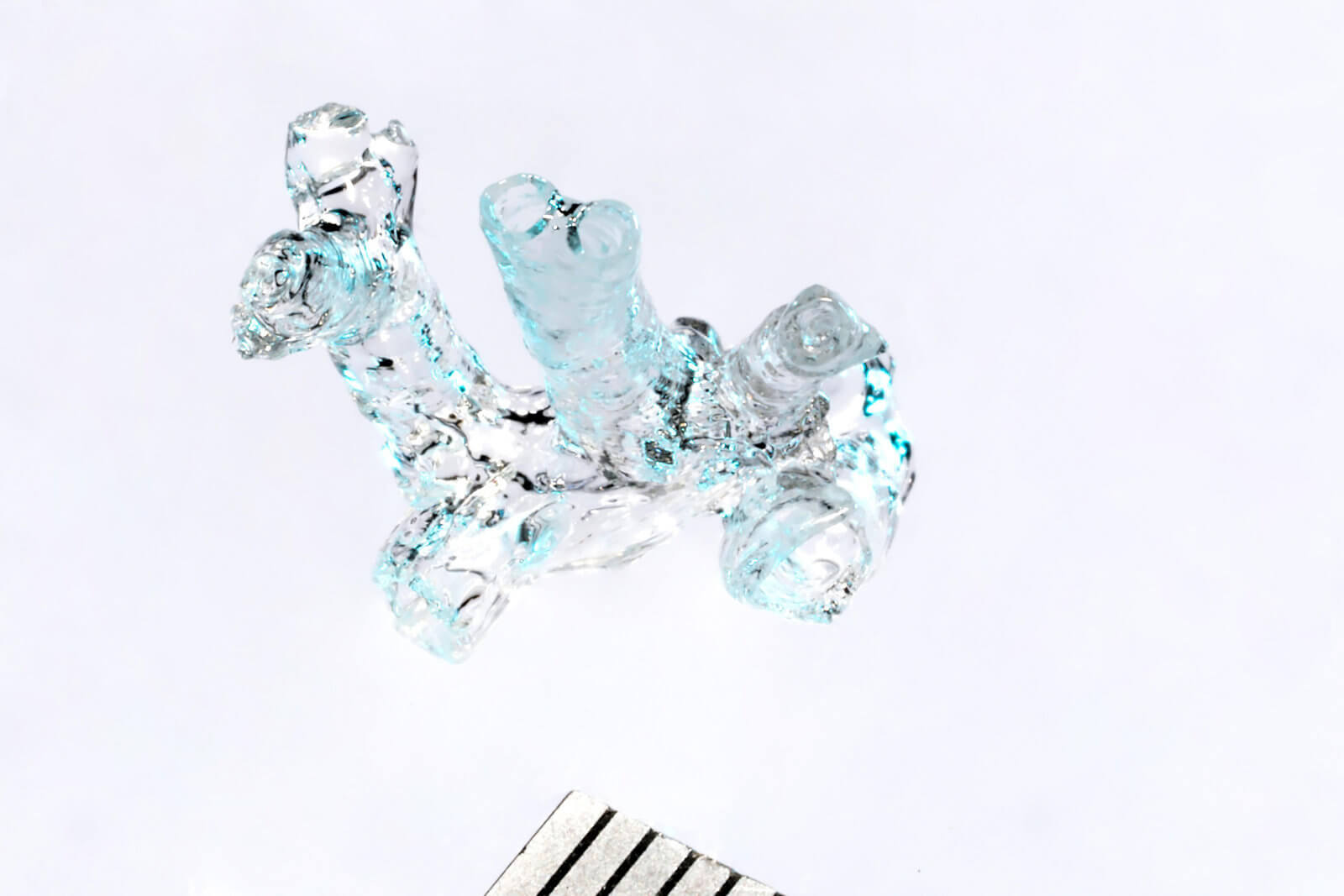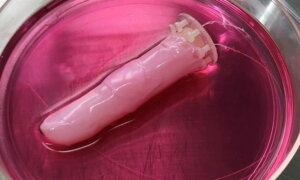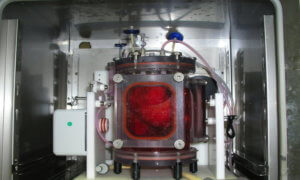Bioprinting tissue is a priceless endeavor: it means that we can create artificial organs and tissue to replace damaged ones and even to test new medicines on. Unfortunately, the methods we use to fabricate these sort of tissues put a limit on viability and speed. However, soon enough, thanks to the scientists at EPFl and the University Medical Center Utrecht in the Netherlands, that might not be the case.
They have managed to develop a new optical method that can sculpt complex shapes and vascularize the tissue it creates – this new method will most likely change tissue engineering as we know it.
Why ?
Because it allows them to create “personalized, functional bioprinted organs.”
They dubbed the technique volumetric bioprinting and what it does is that it projects a laser down a spinning tube that is filled with a hydrogel full of stem cells. By focusing the laser’s energy at specific locations, they can shape the tissue. This tissue is then solidified and, in just a few seconds, it breathes life to a 3D shape, contained within the gel. All that’s left for the researchers to do is vascularize the tissue by adding endothelial cells into it.
while the tissues created so far measure just a few inches across, they are still considered to be “clinically useful”.
“Unlike conventional bioprinting – a slow, layer-by-layer process – our technique is fast and offers greater design freedom without jeopardizing the cells’ viability,” Damien Loterie, an LAPD researcher and one of the study’s coauthors has said.
The researchers created a valve similar to the ones the human heart features, a meniscus as well as a part of the femur, in additional to other, interlocking structures.
“The characteristics of human tissue depend to a large extent on a highly sophisticated extracellular structure, and the ability to replicate this complexity could lead to a number of real clinical applications,” Paul Delrot, additional co-author of the study has said.
Head of the LAPD, Christophe Moser, has said that this technique marks just the beginning of something much better to come.
“We believe that our method is inherently scalable towards mass fabrication and could be used to produce a wide range of cellular tissue models, not to mention medical devices and personalized implants,” Moser said.
For now, the technology is not ready to be used as actual medical technology, but the researchers are confident that time is not too far off.
Follow TechTheLead on Google News to get the news first.



























